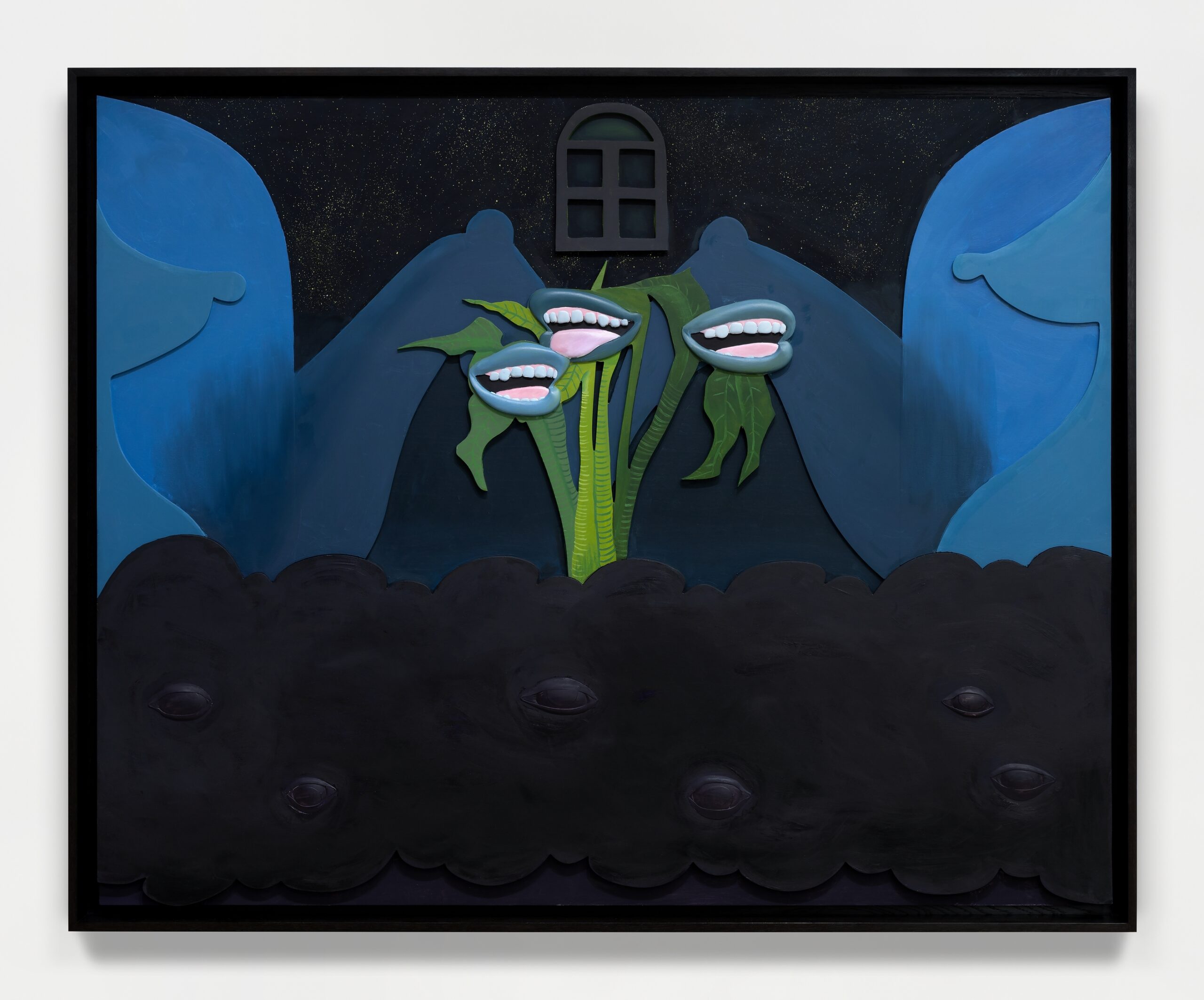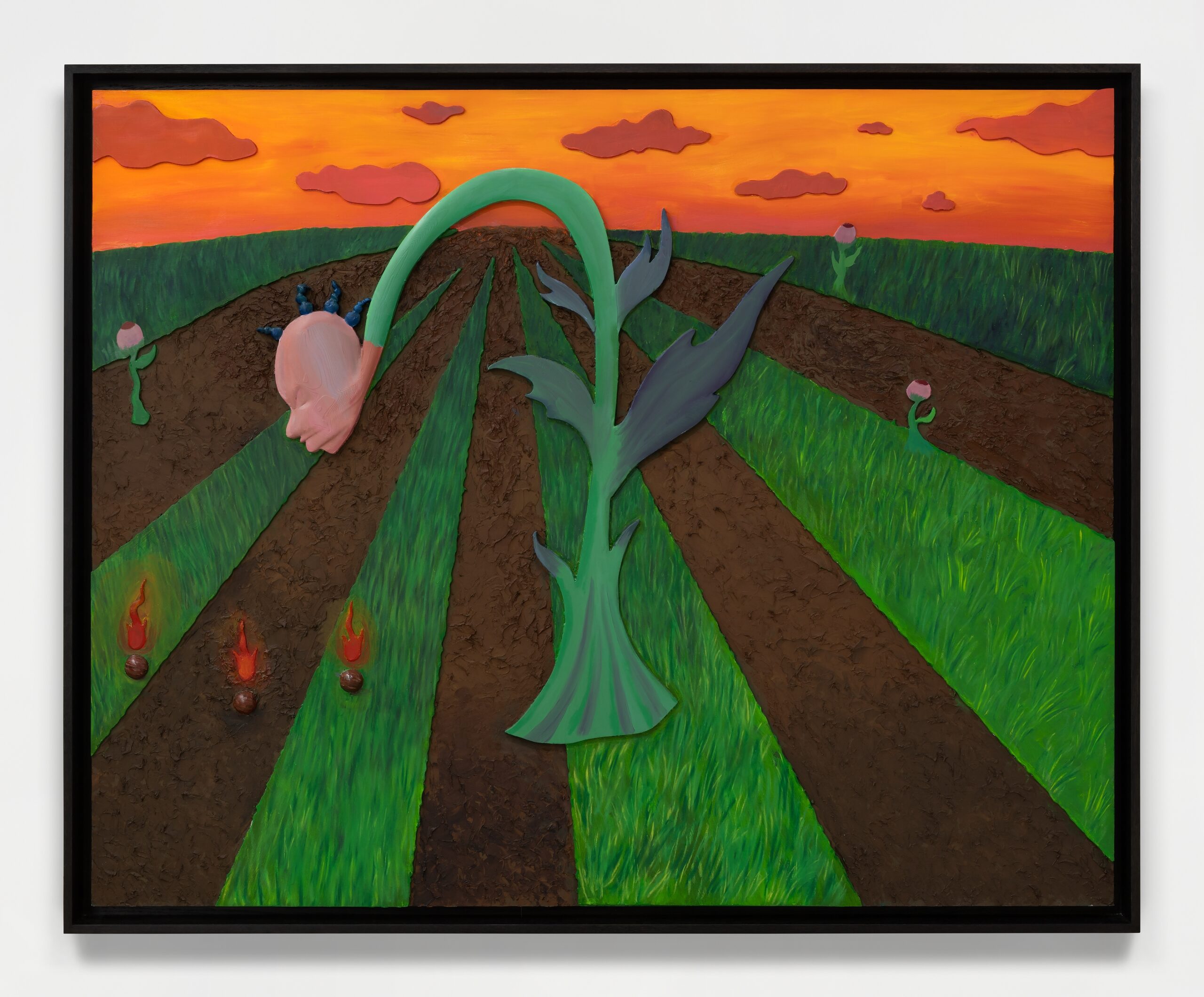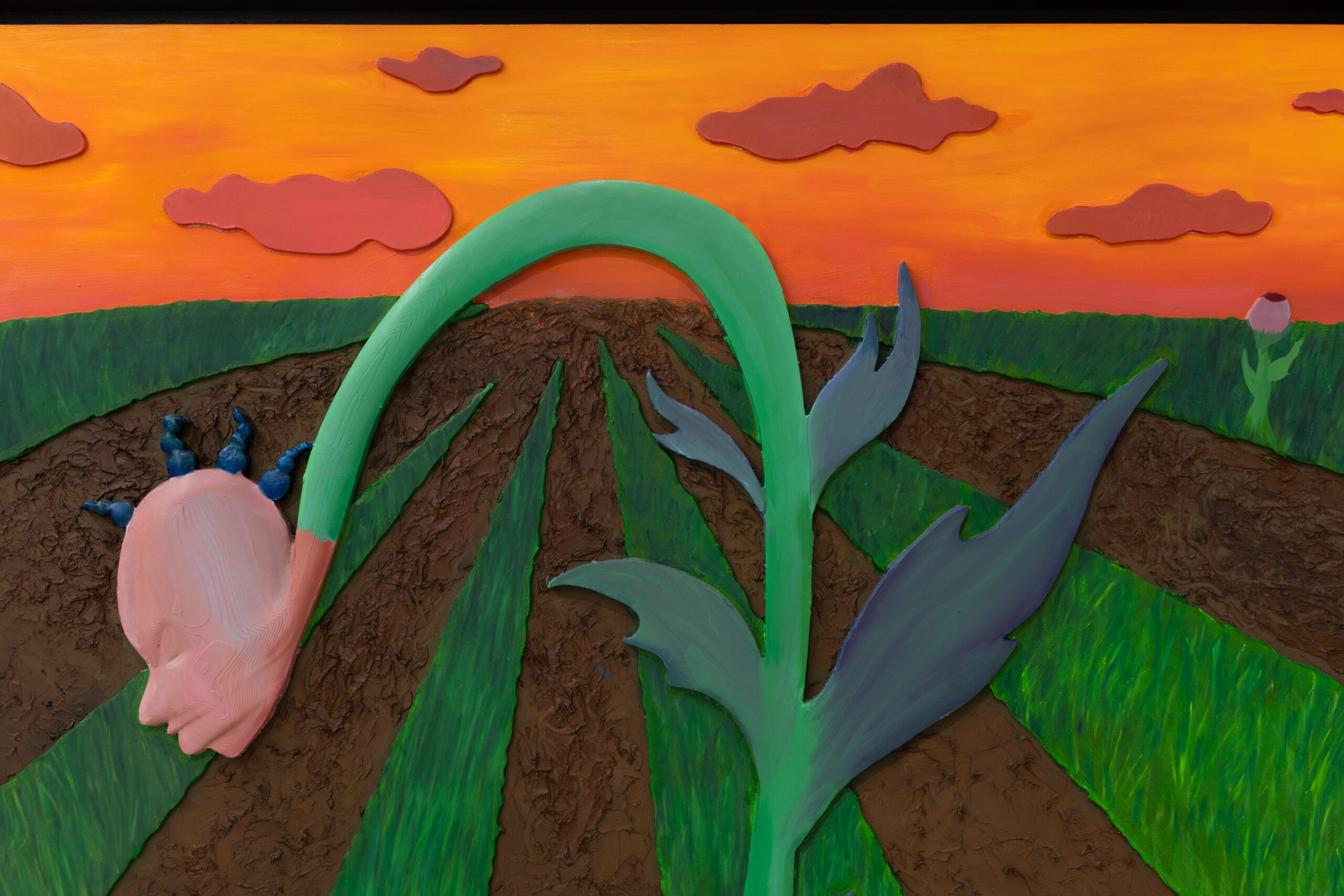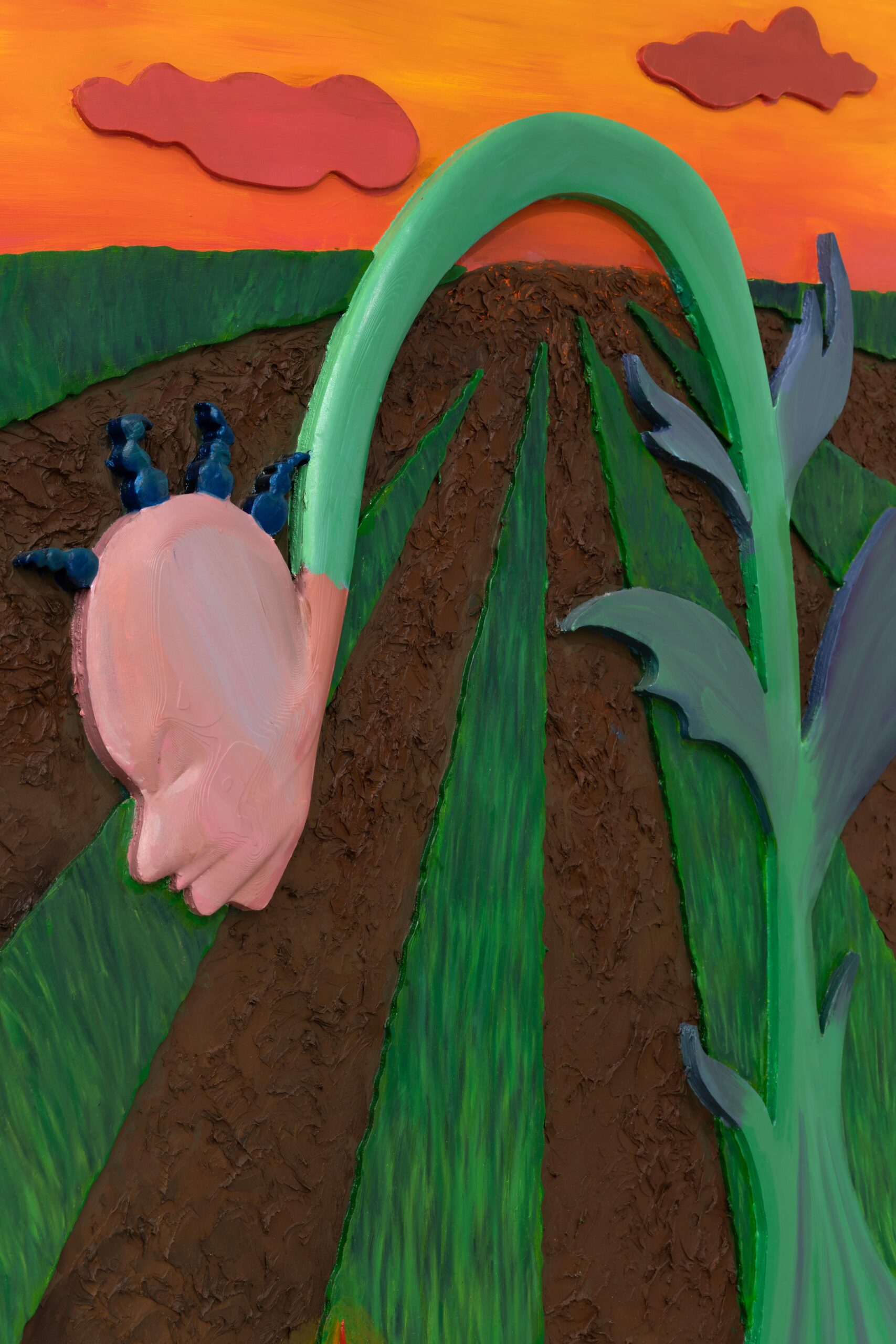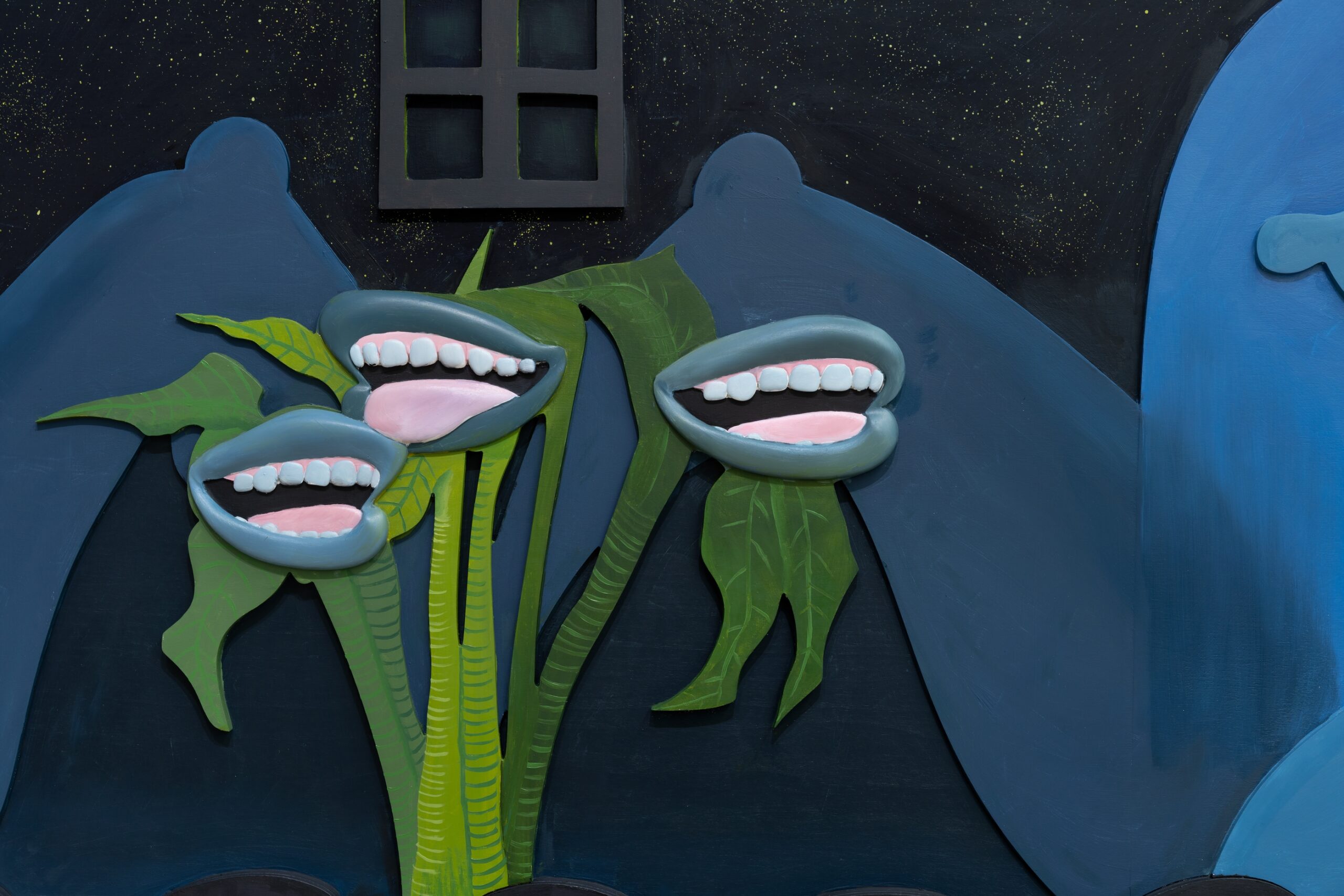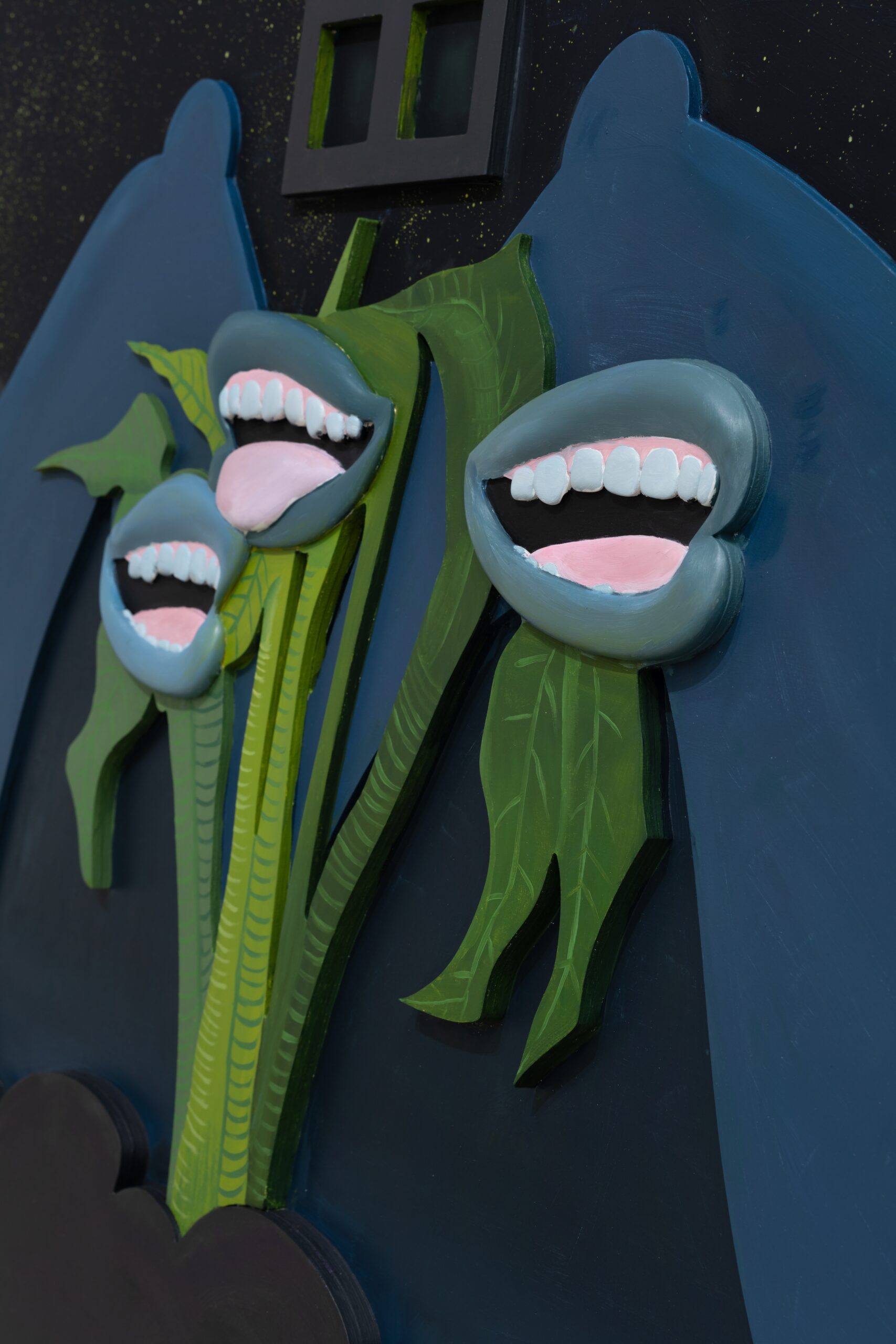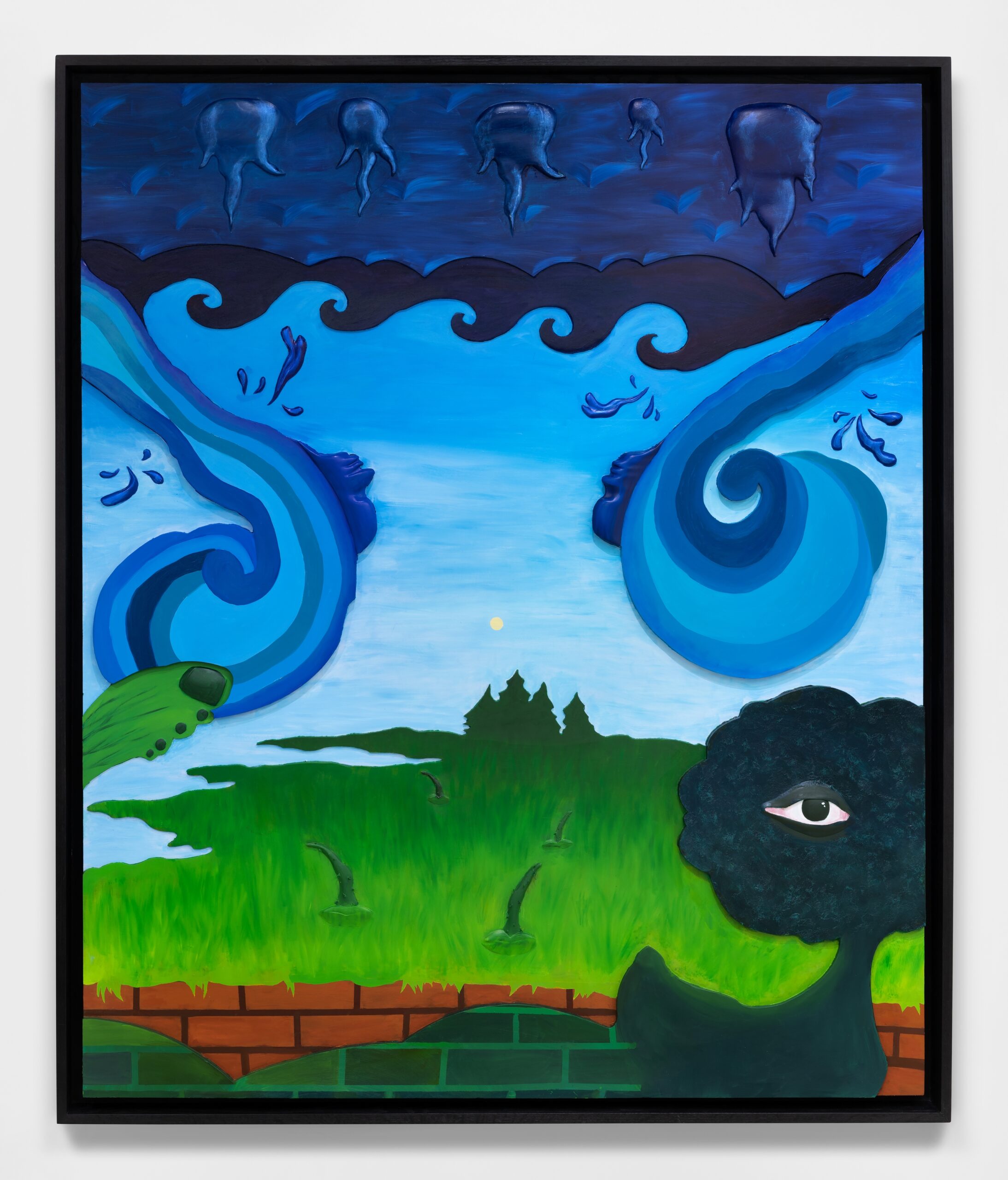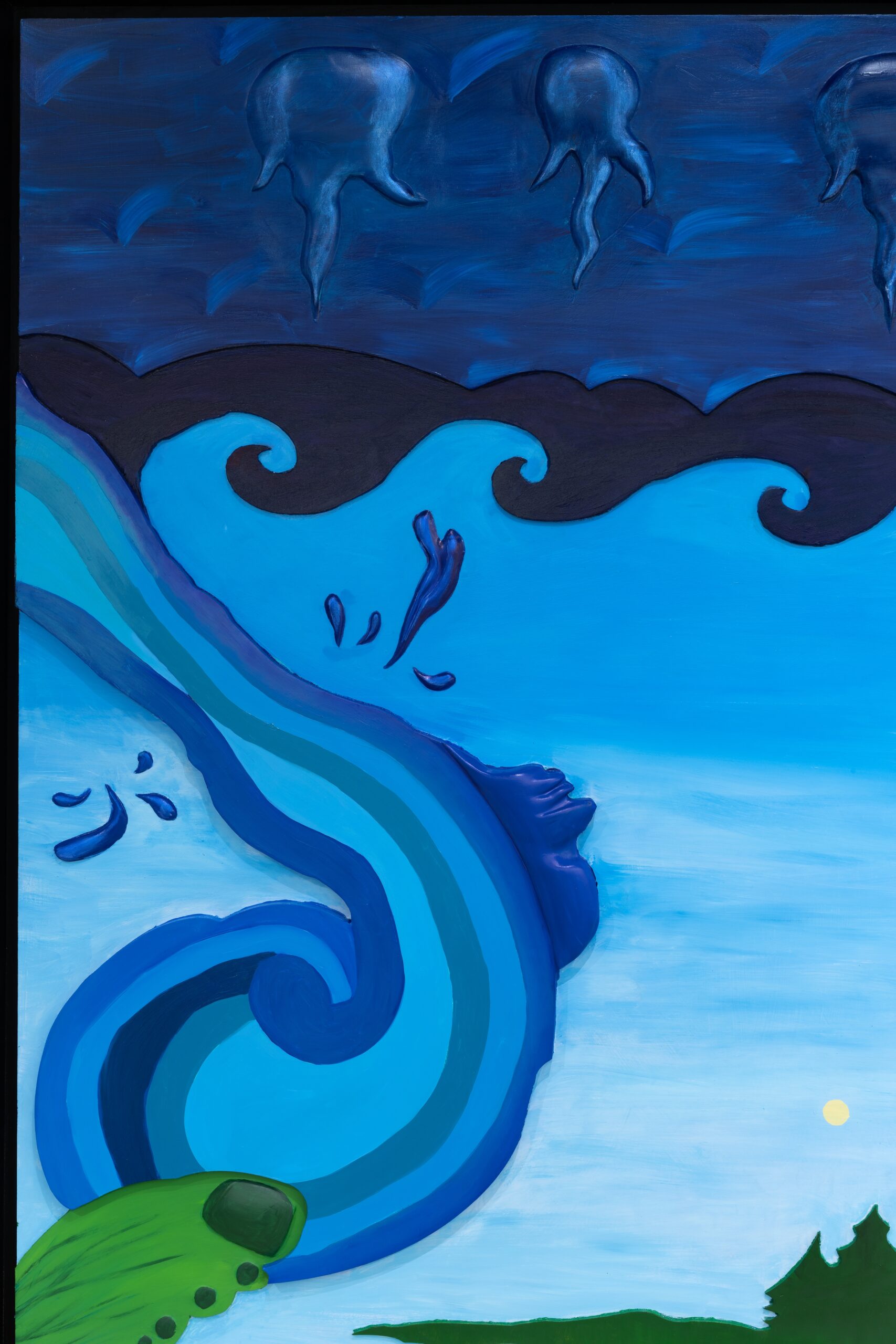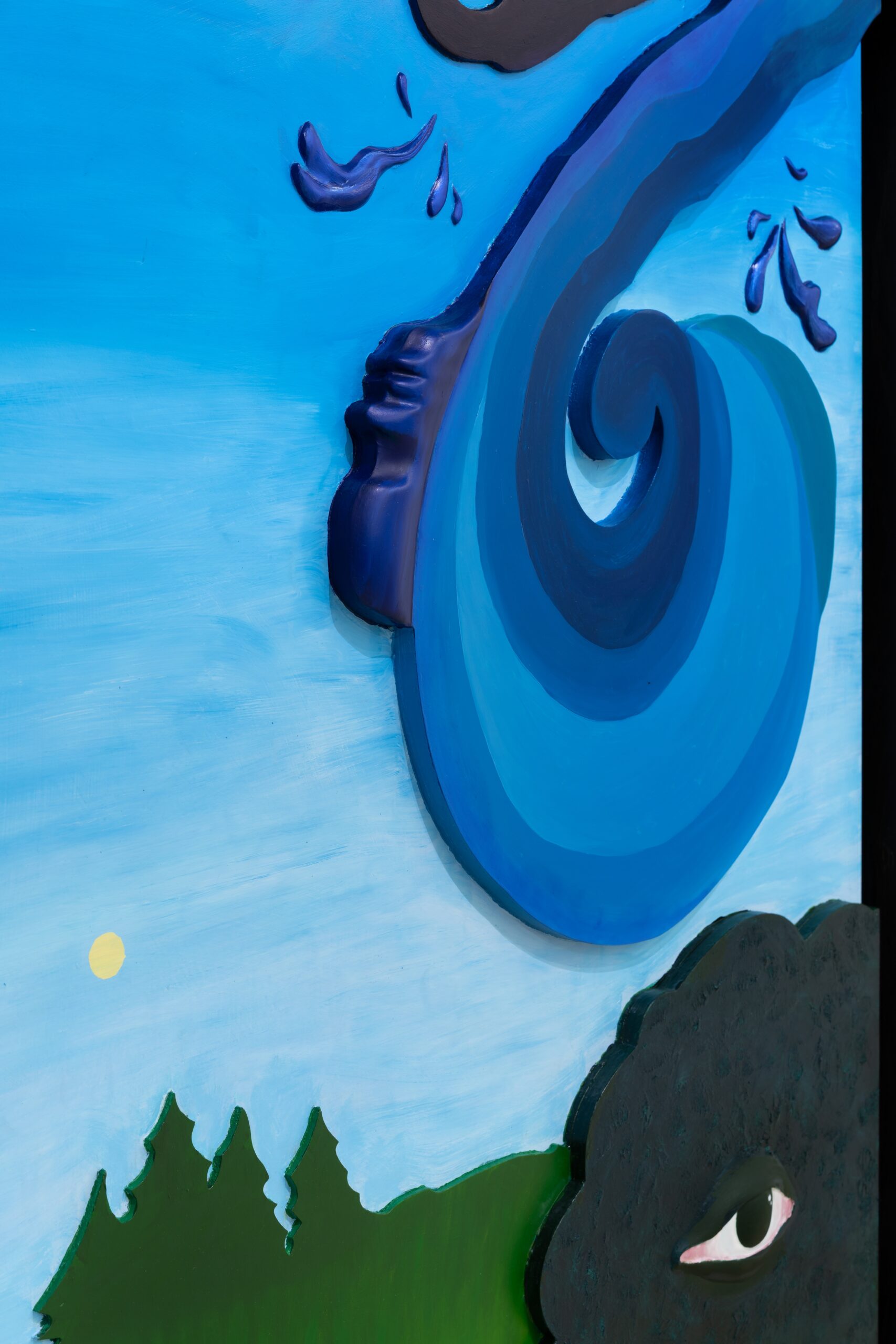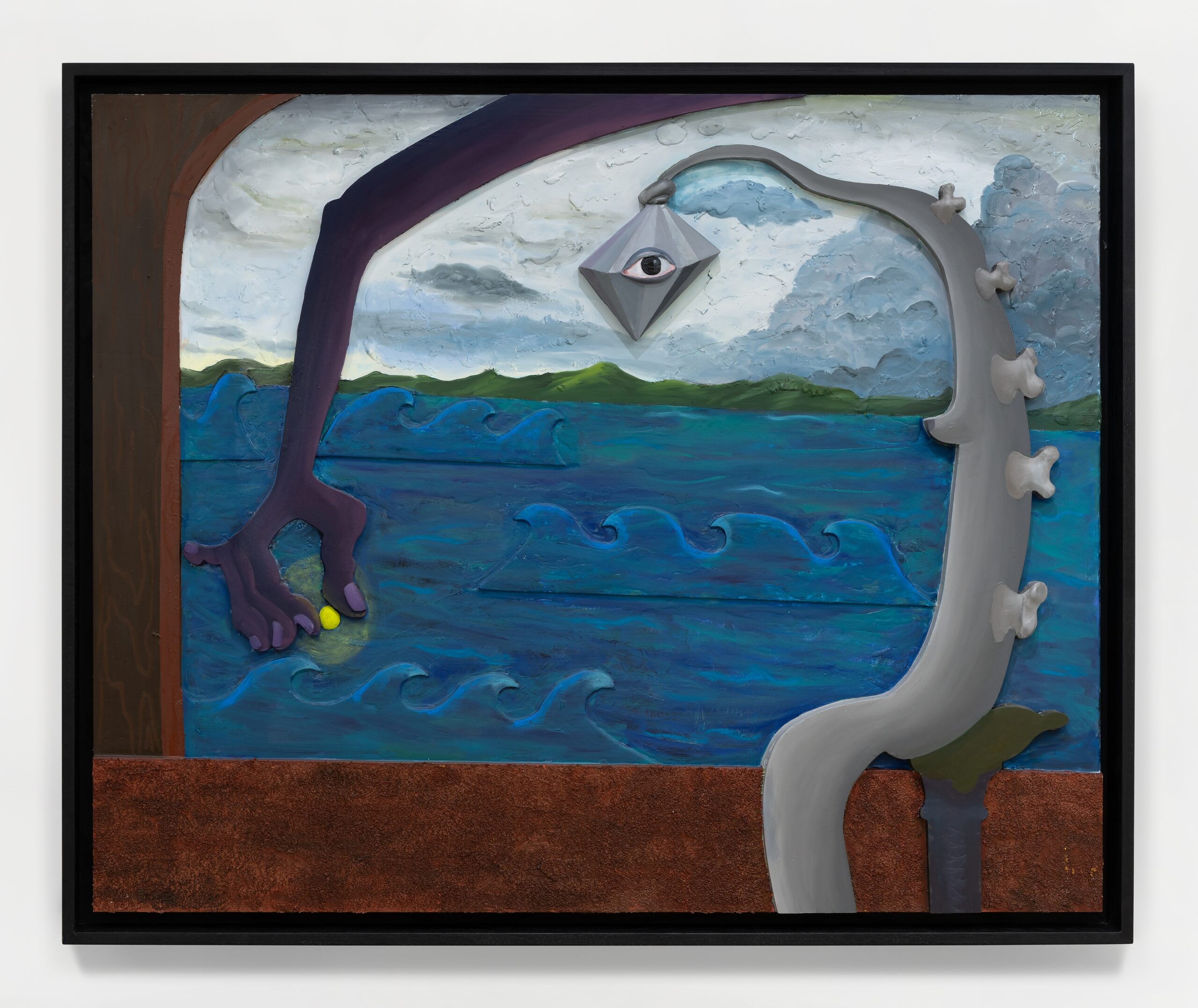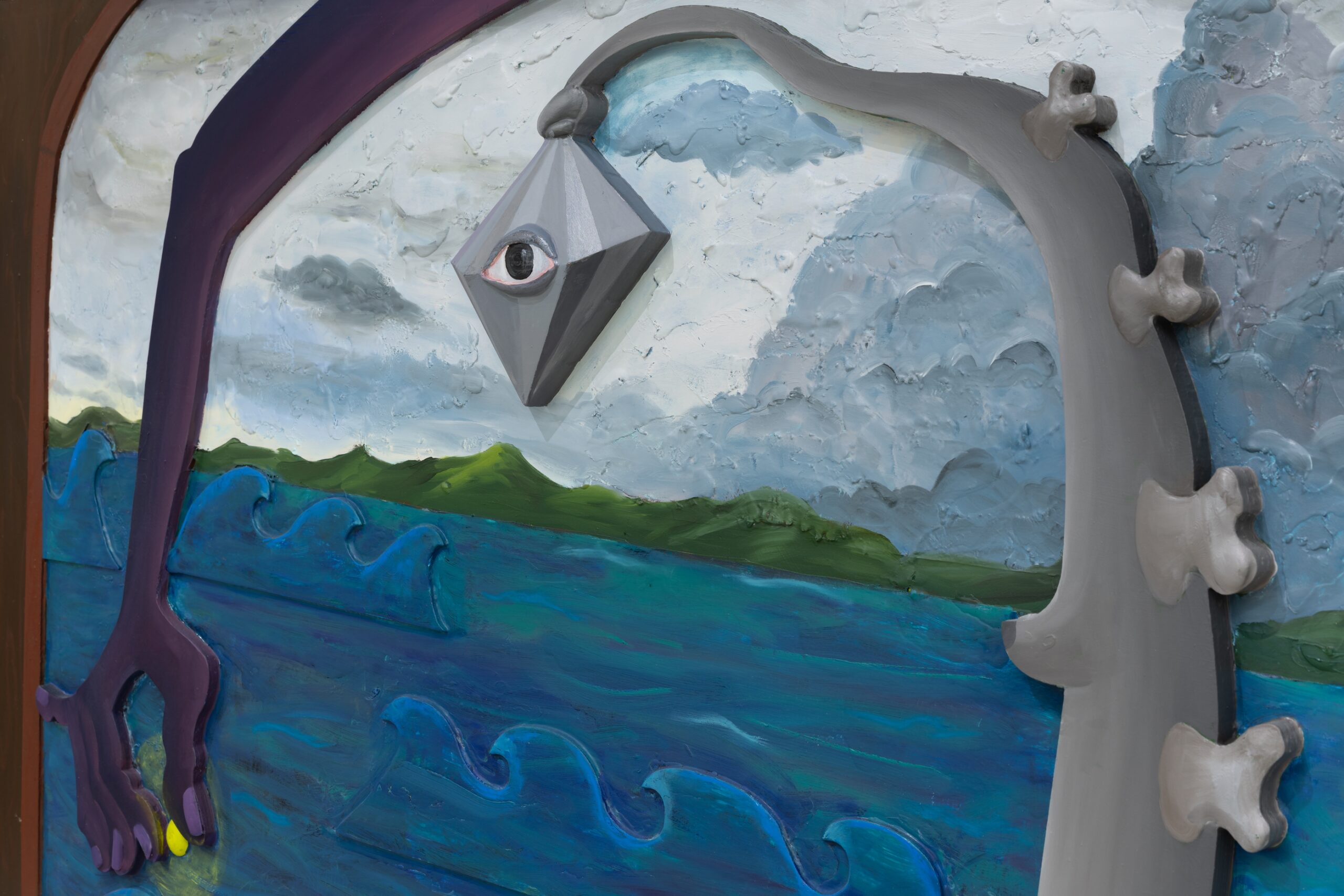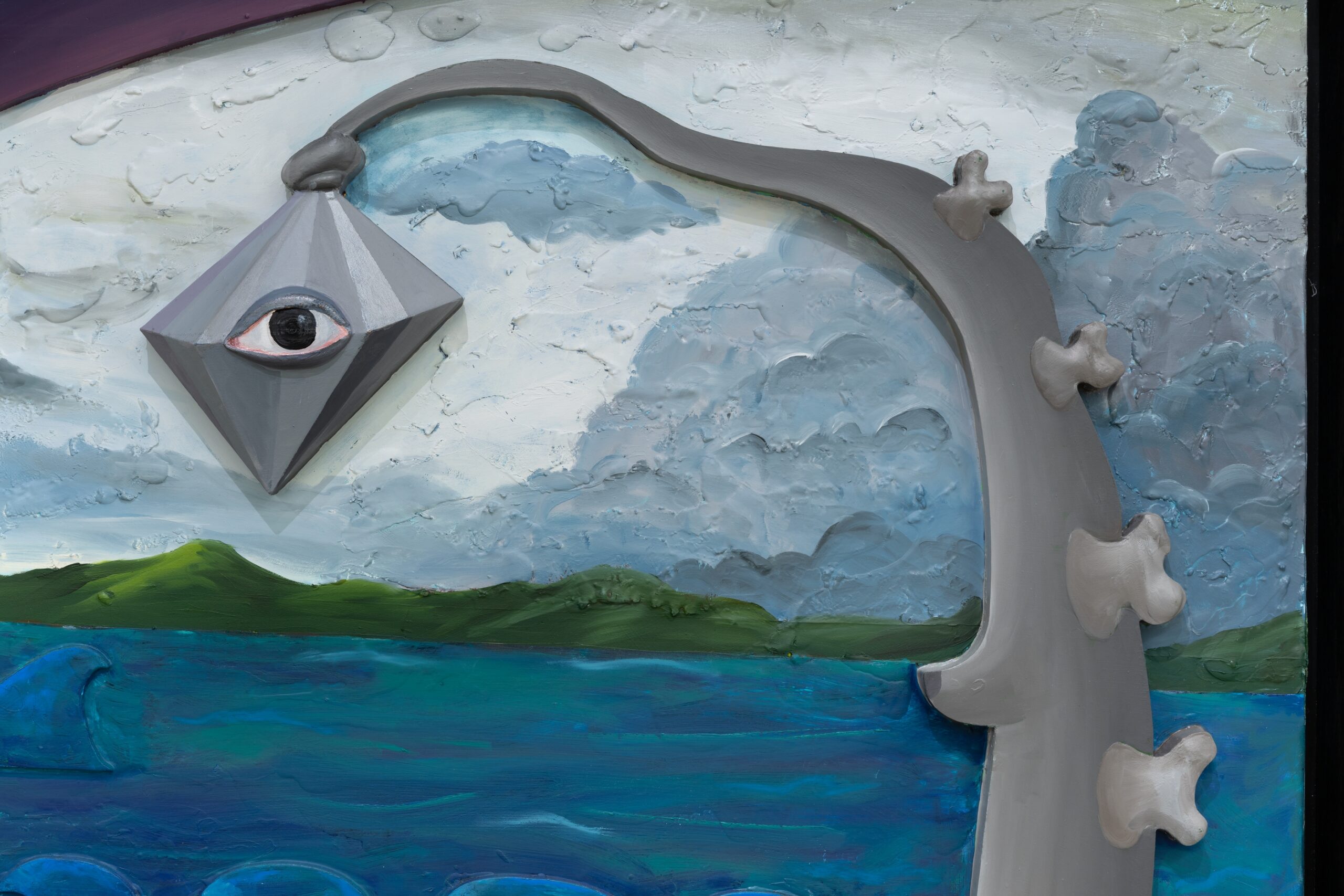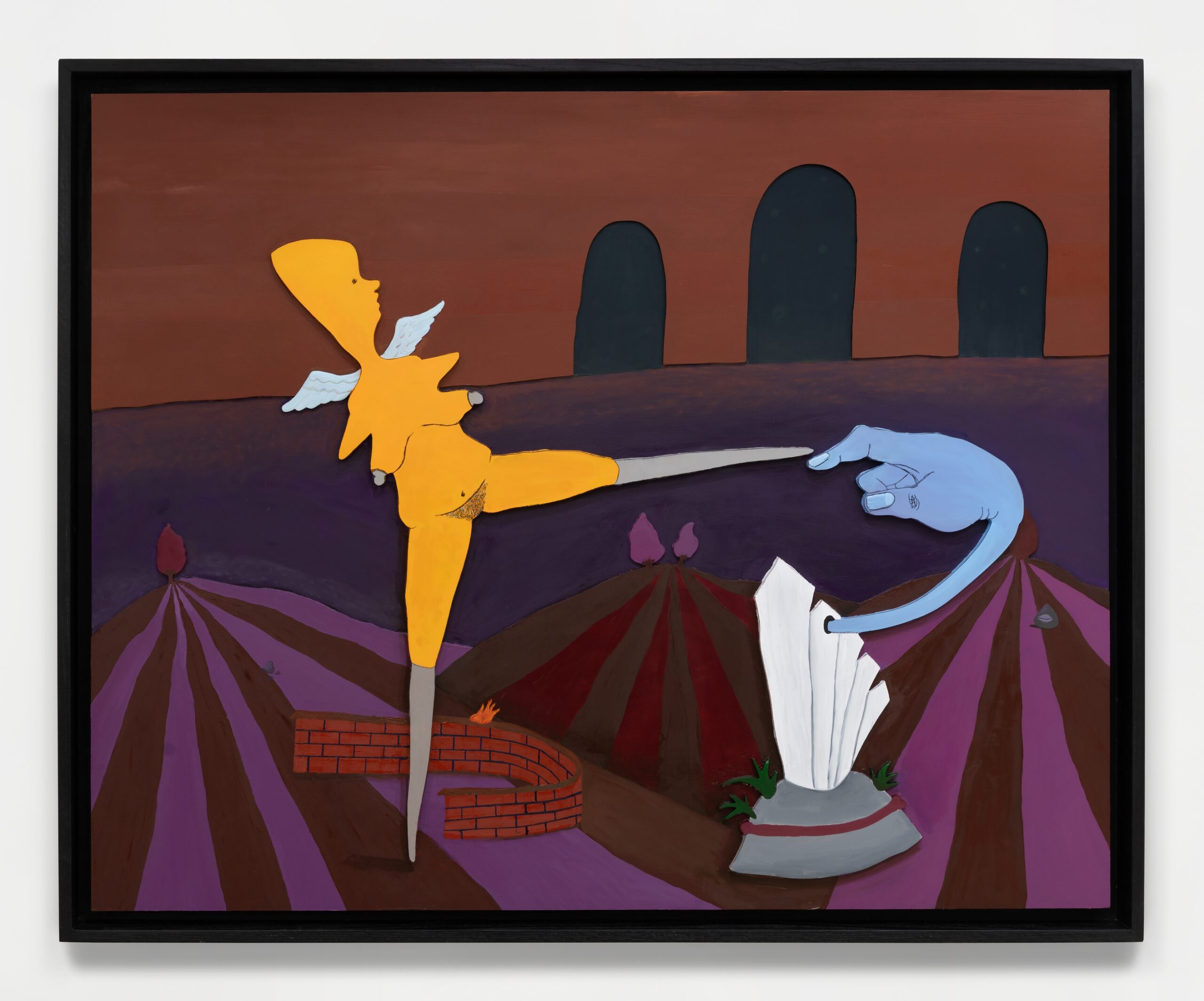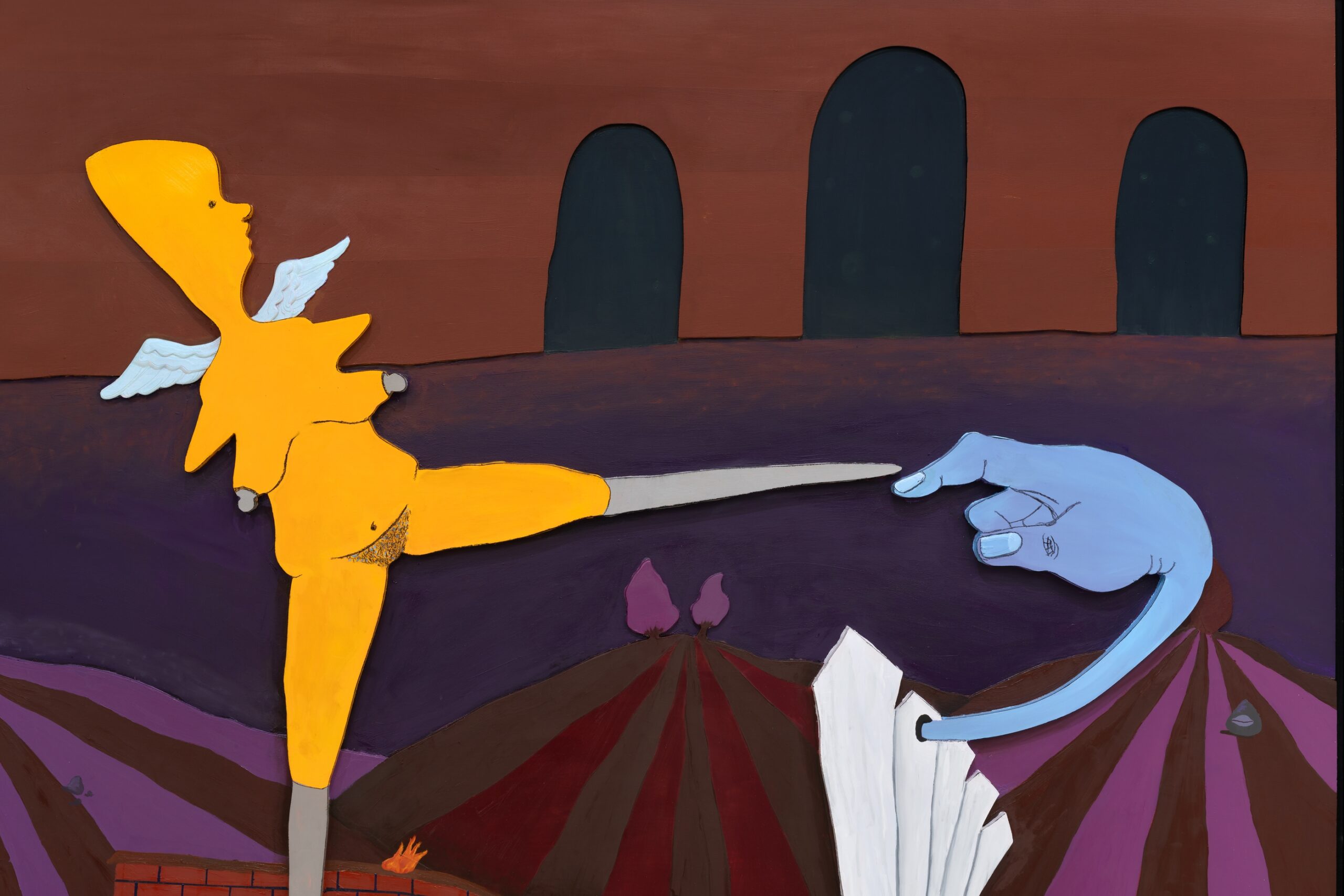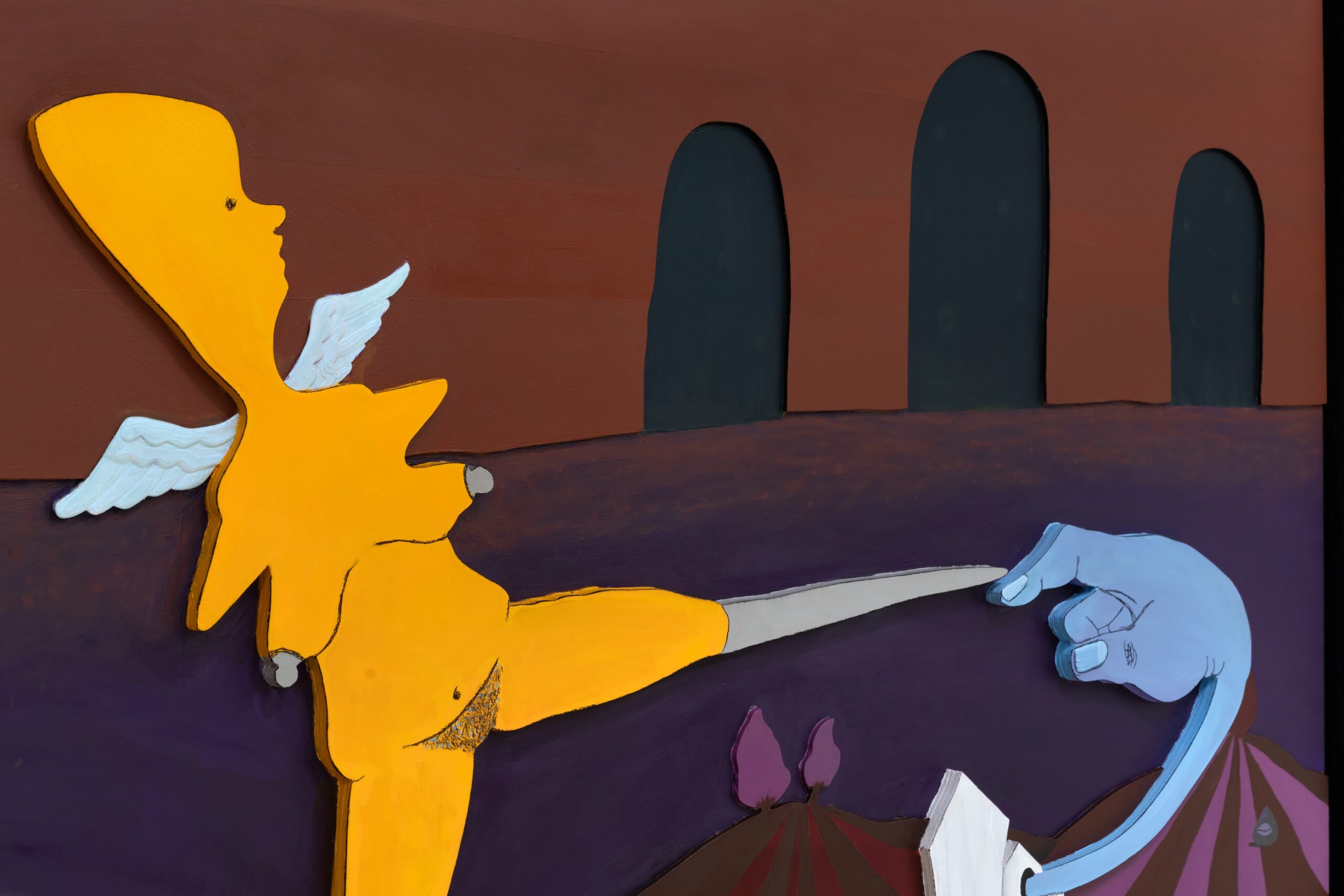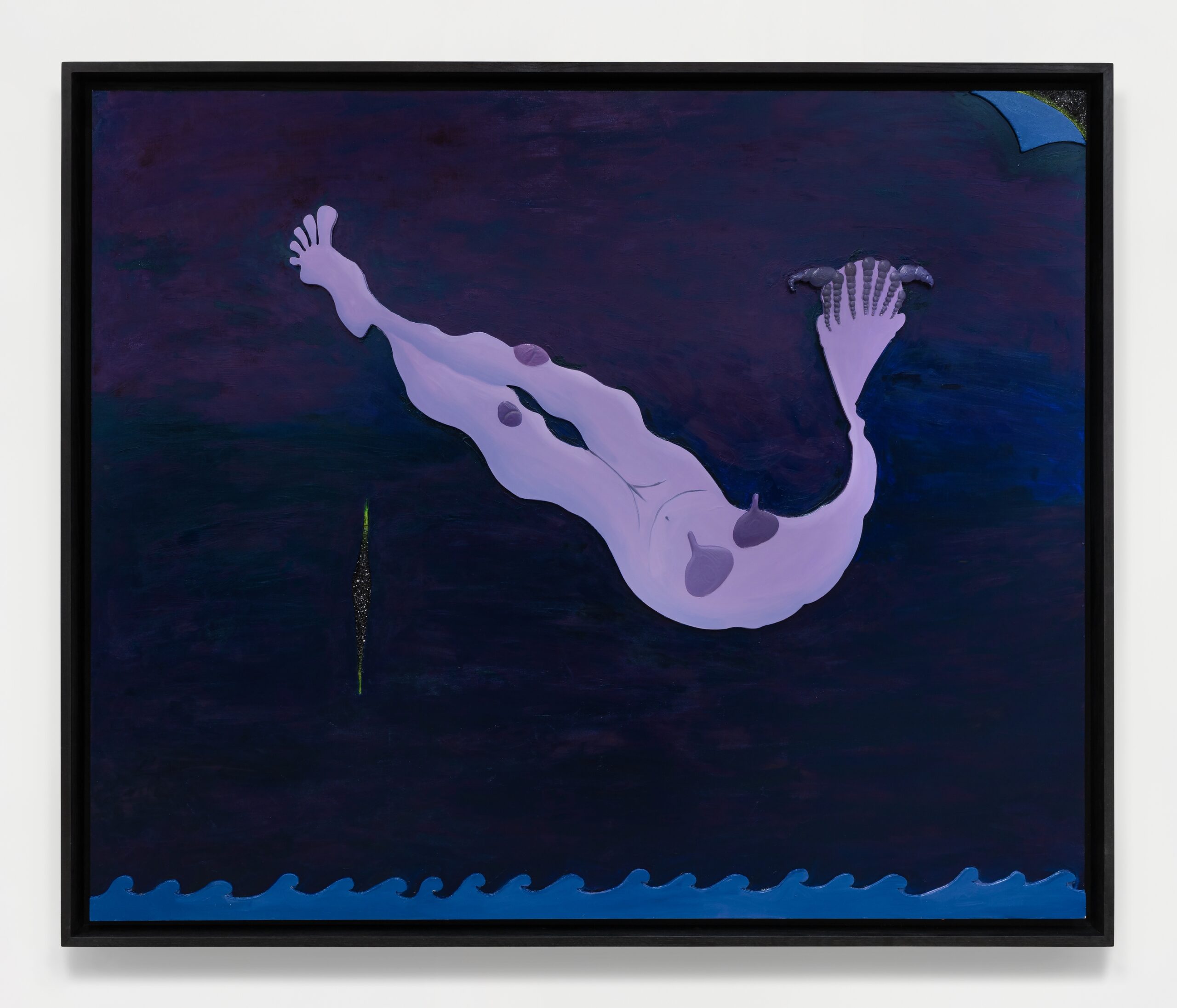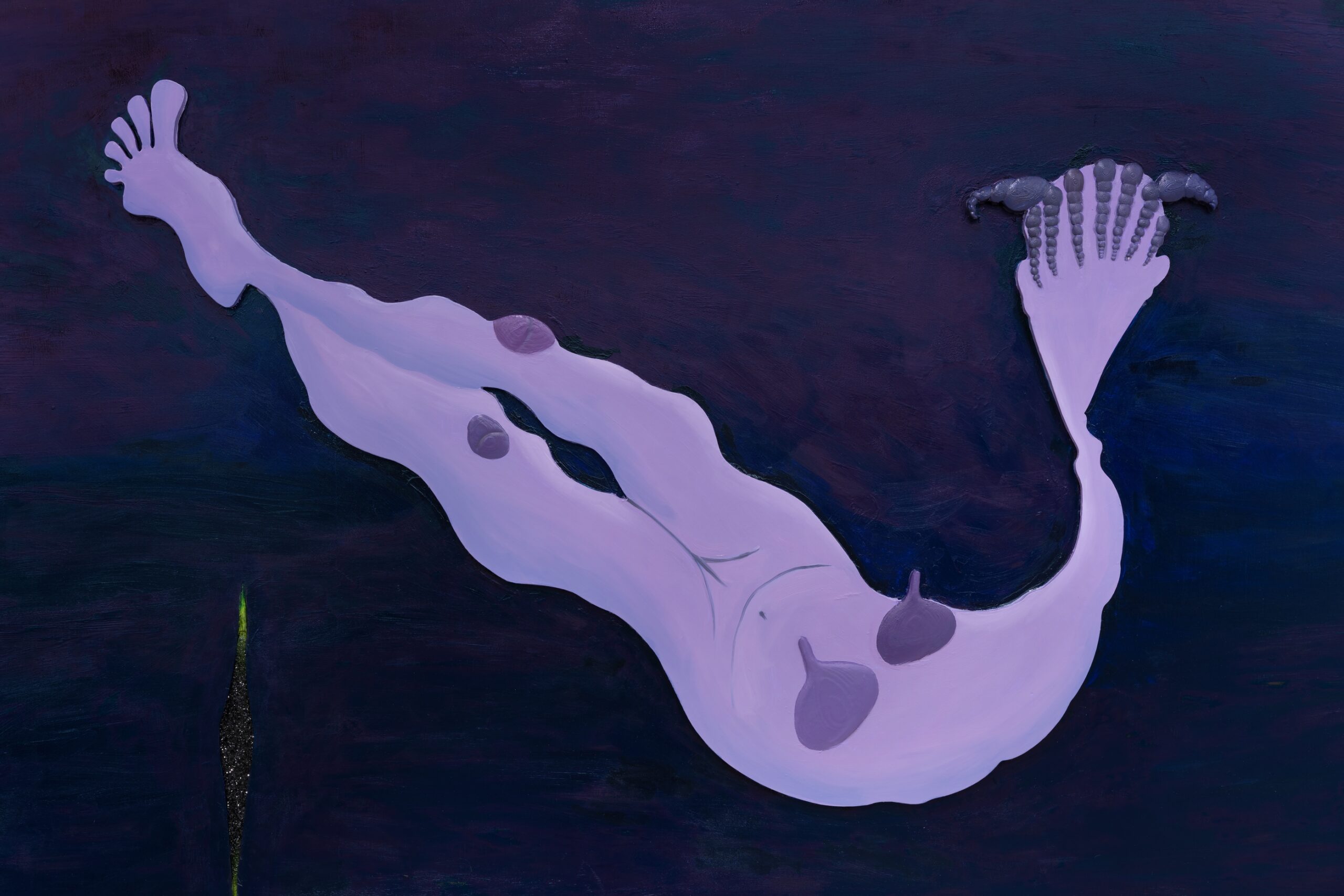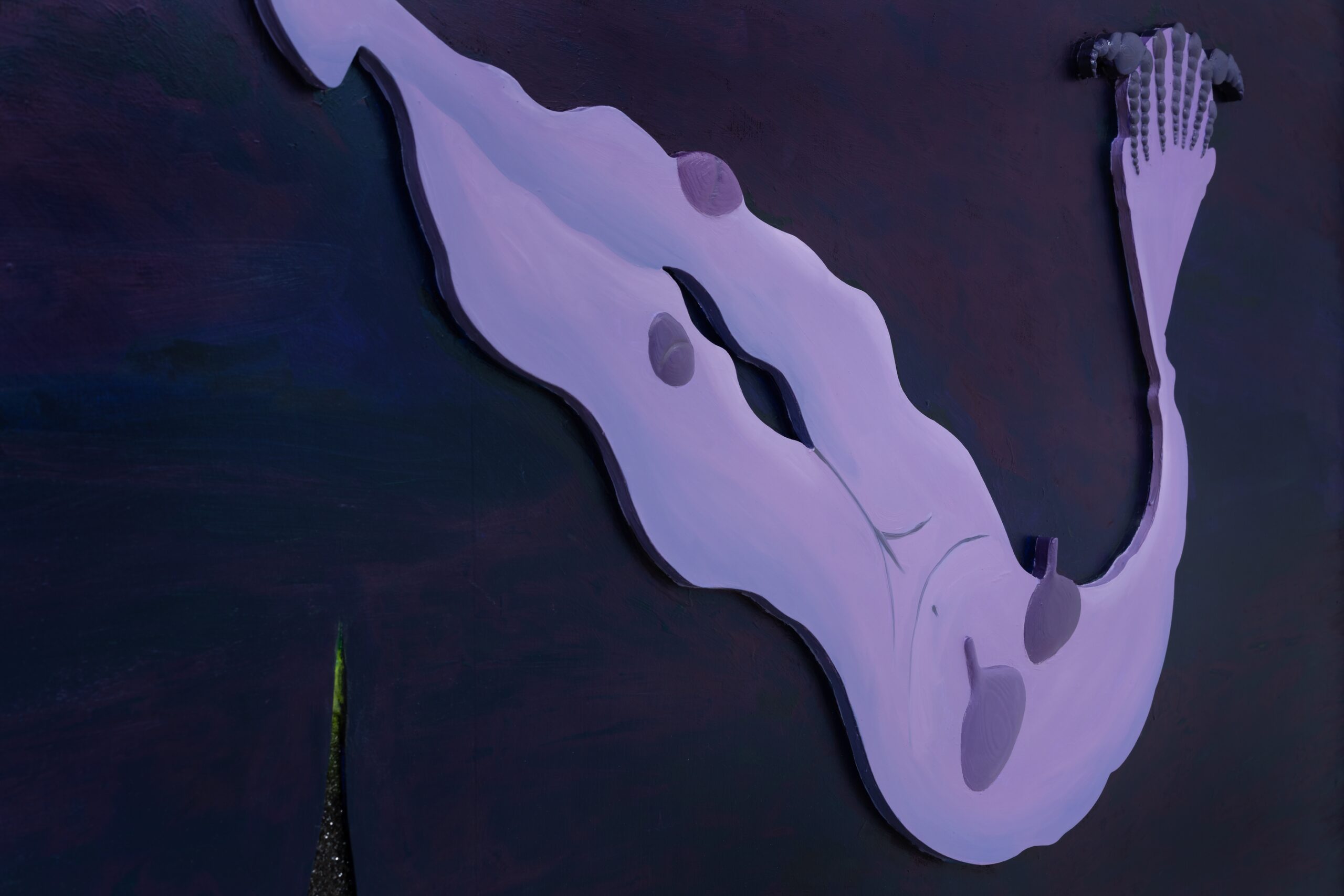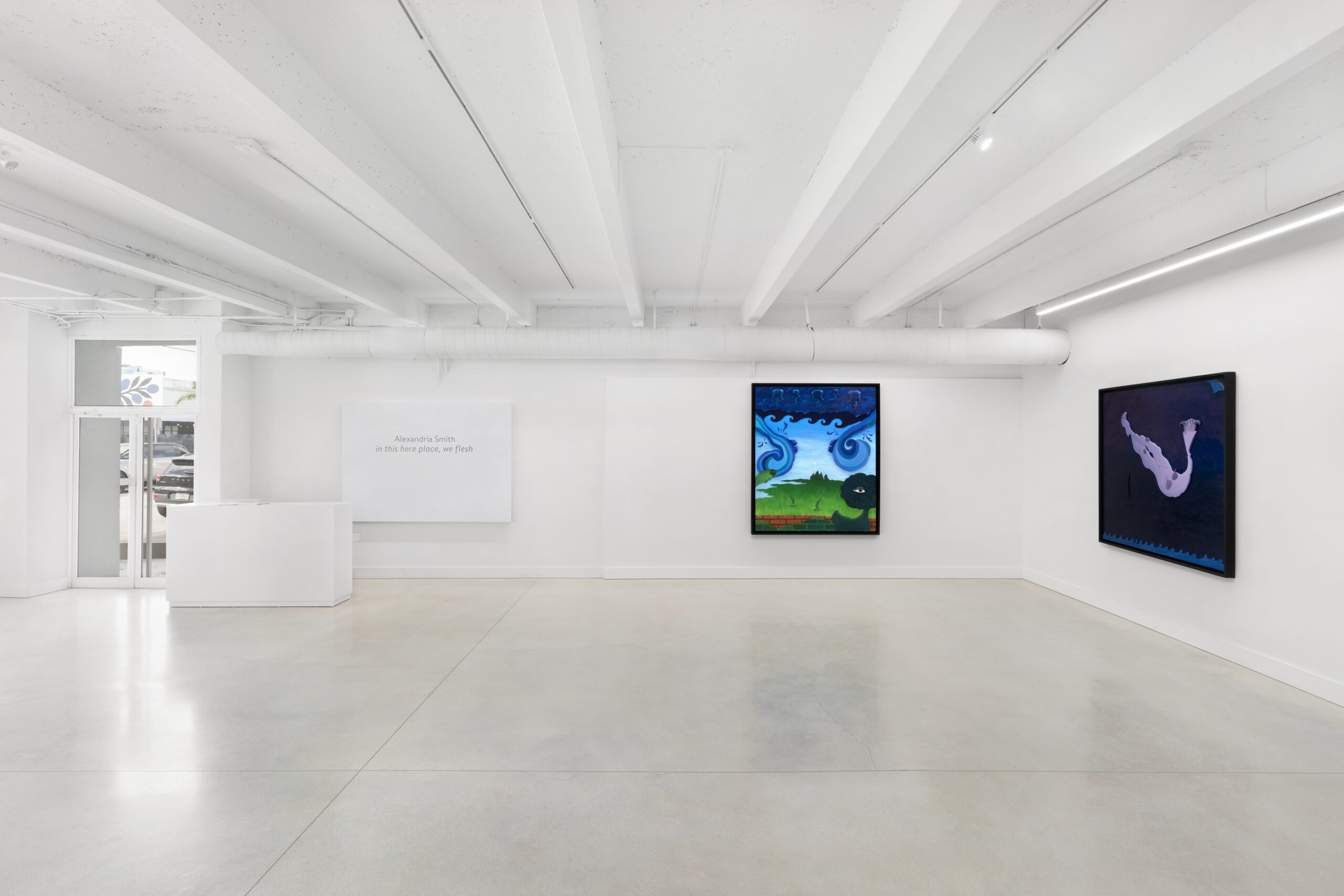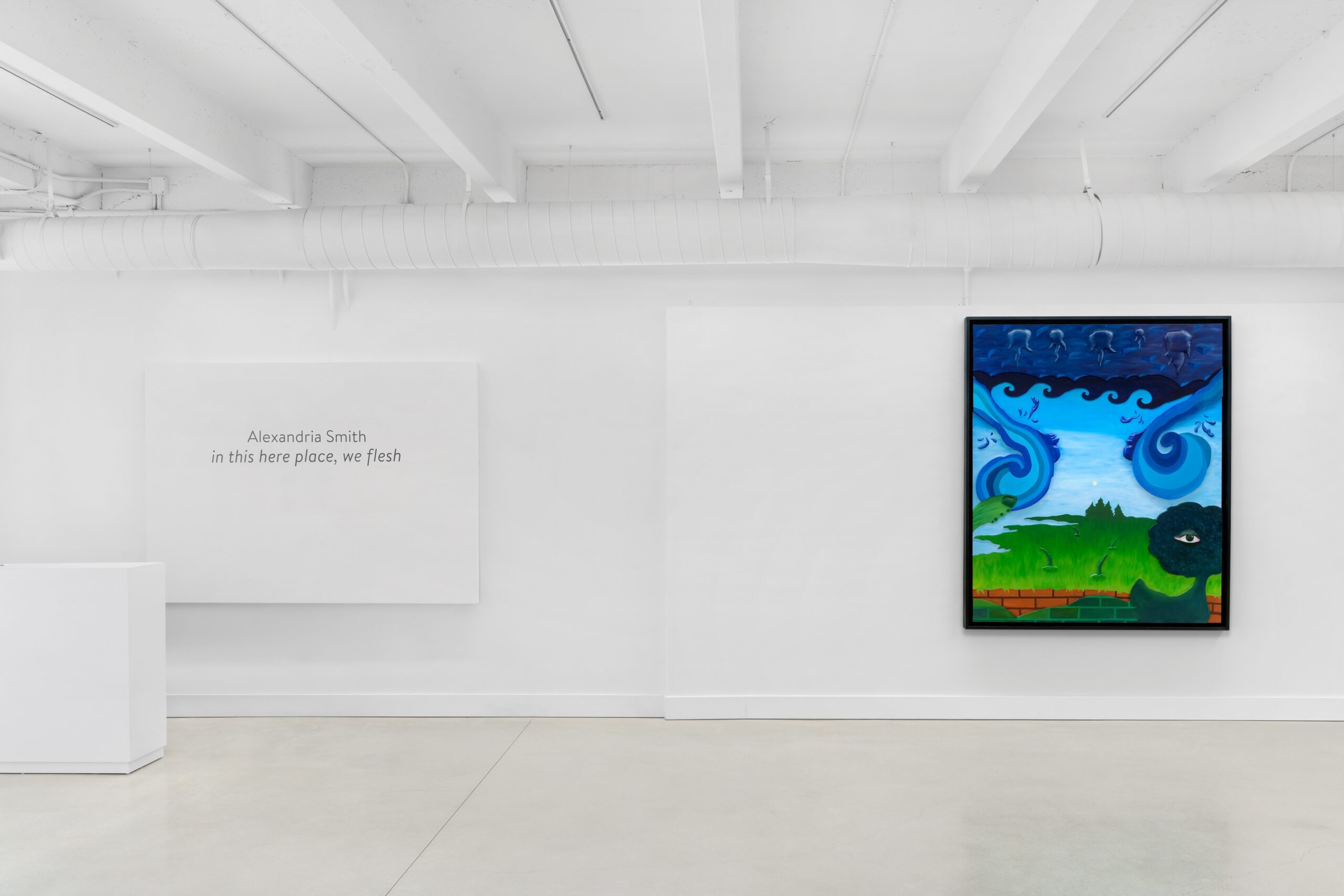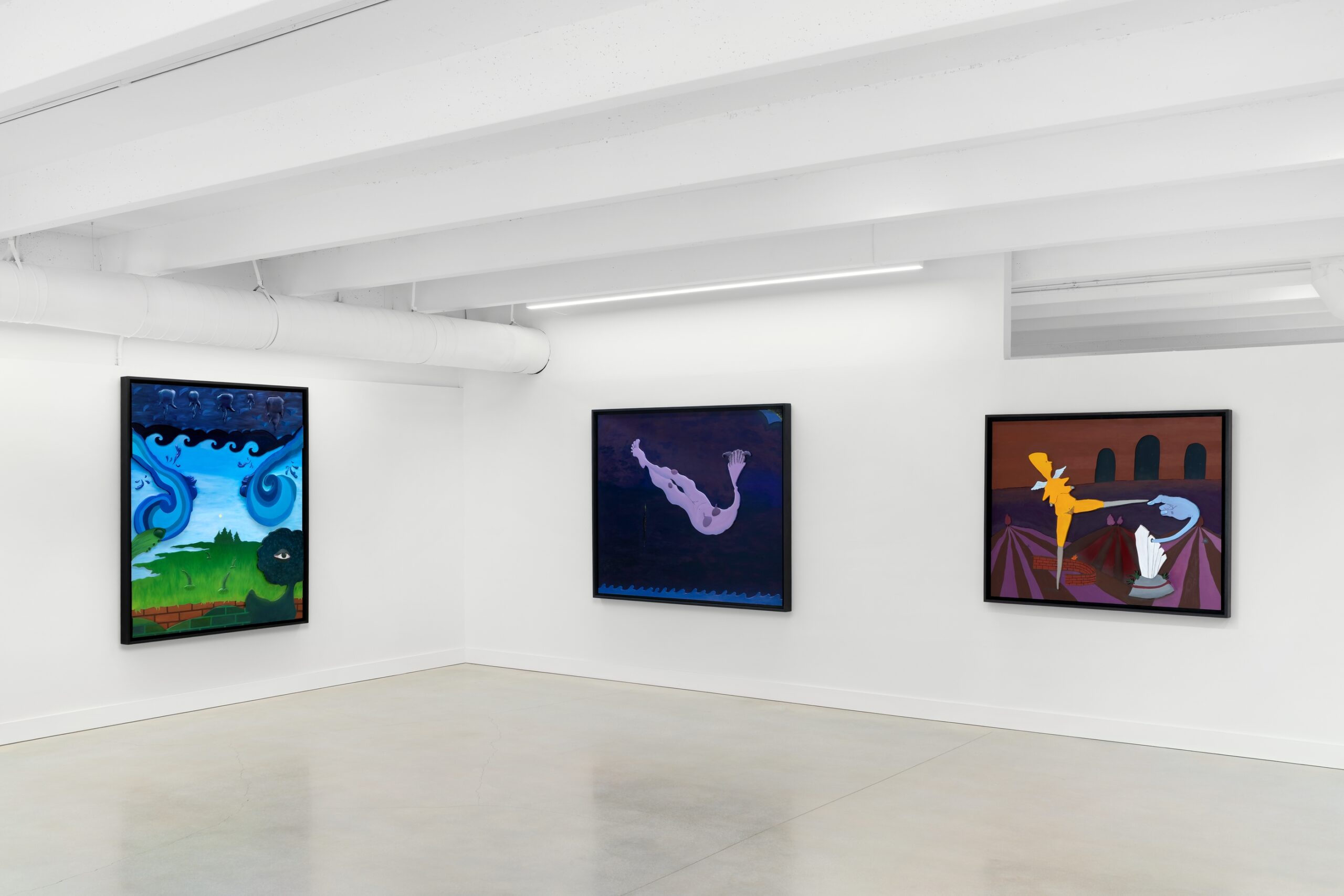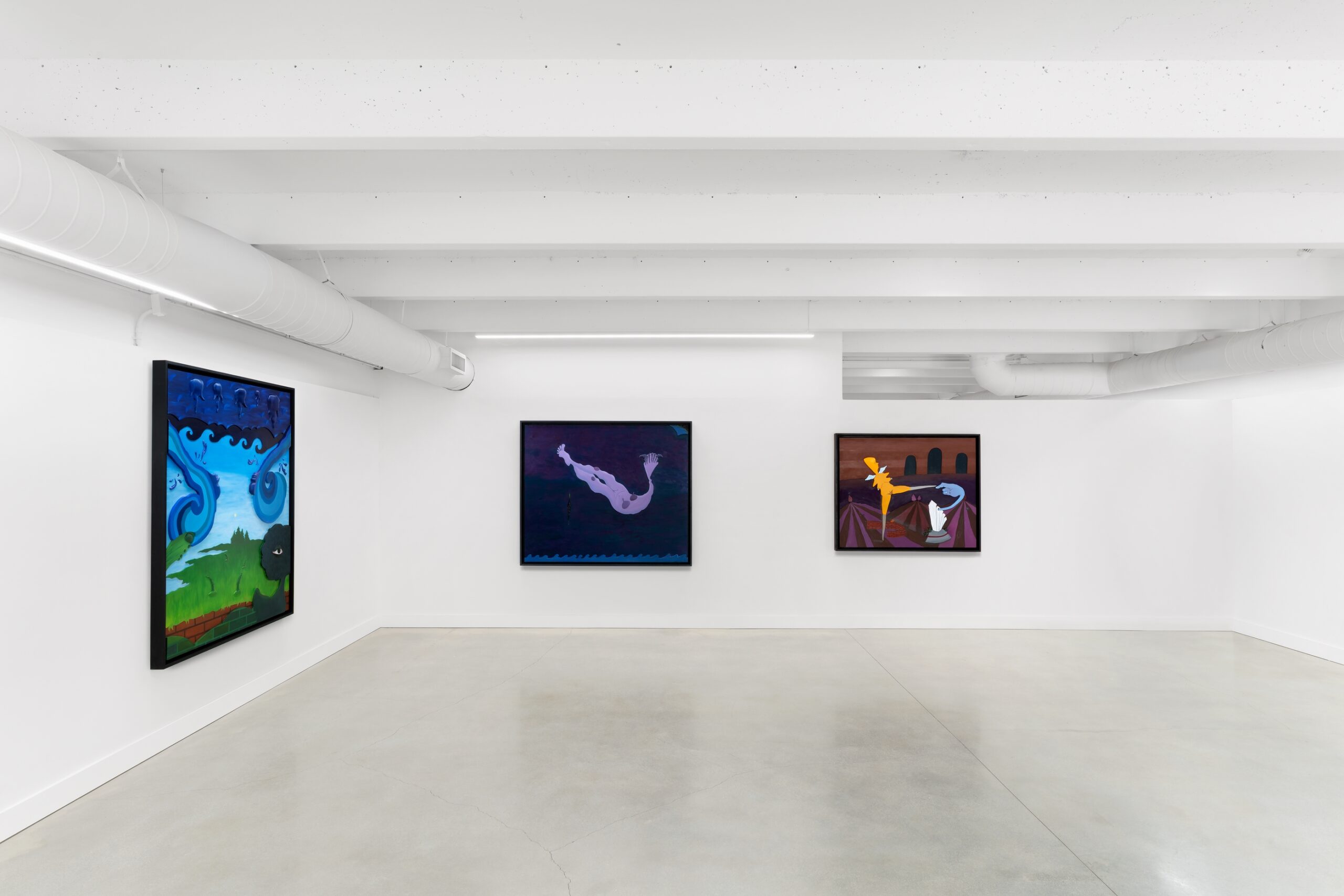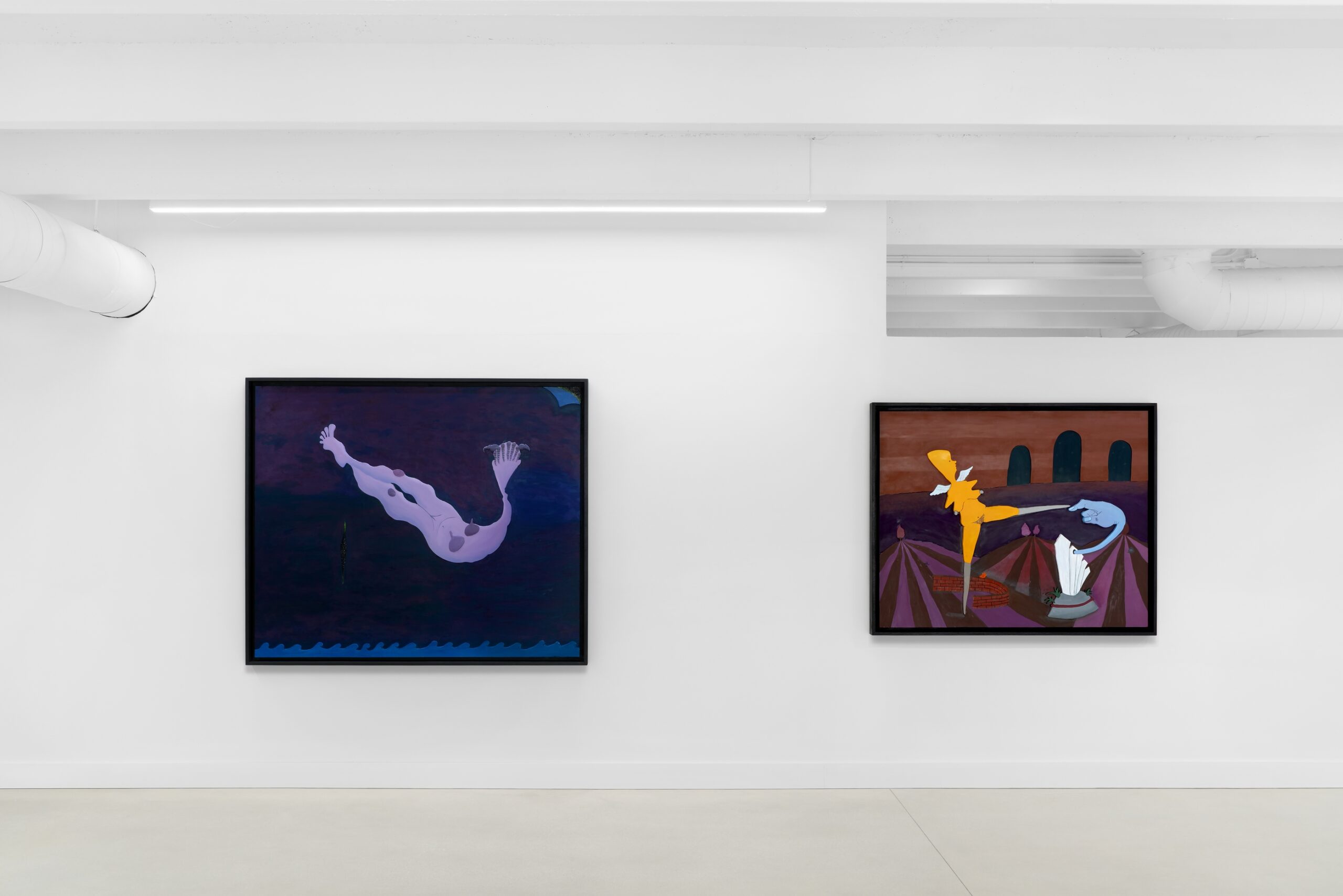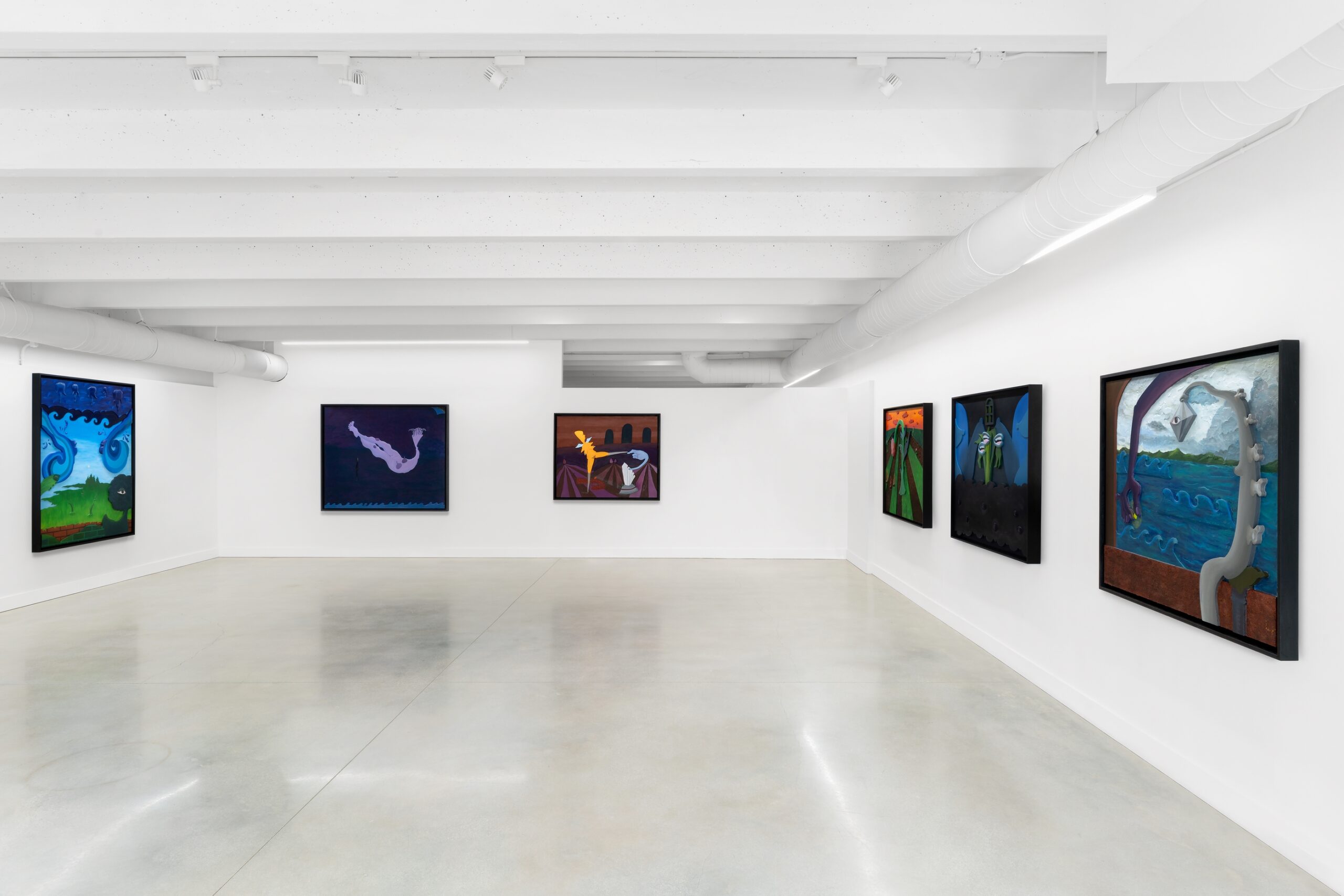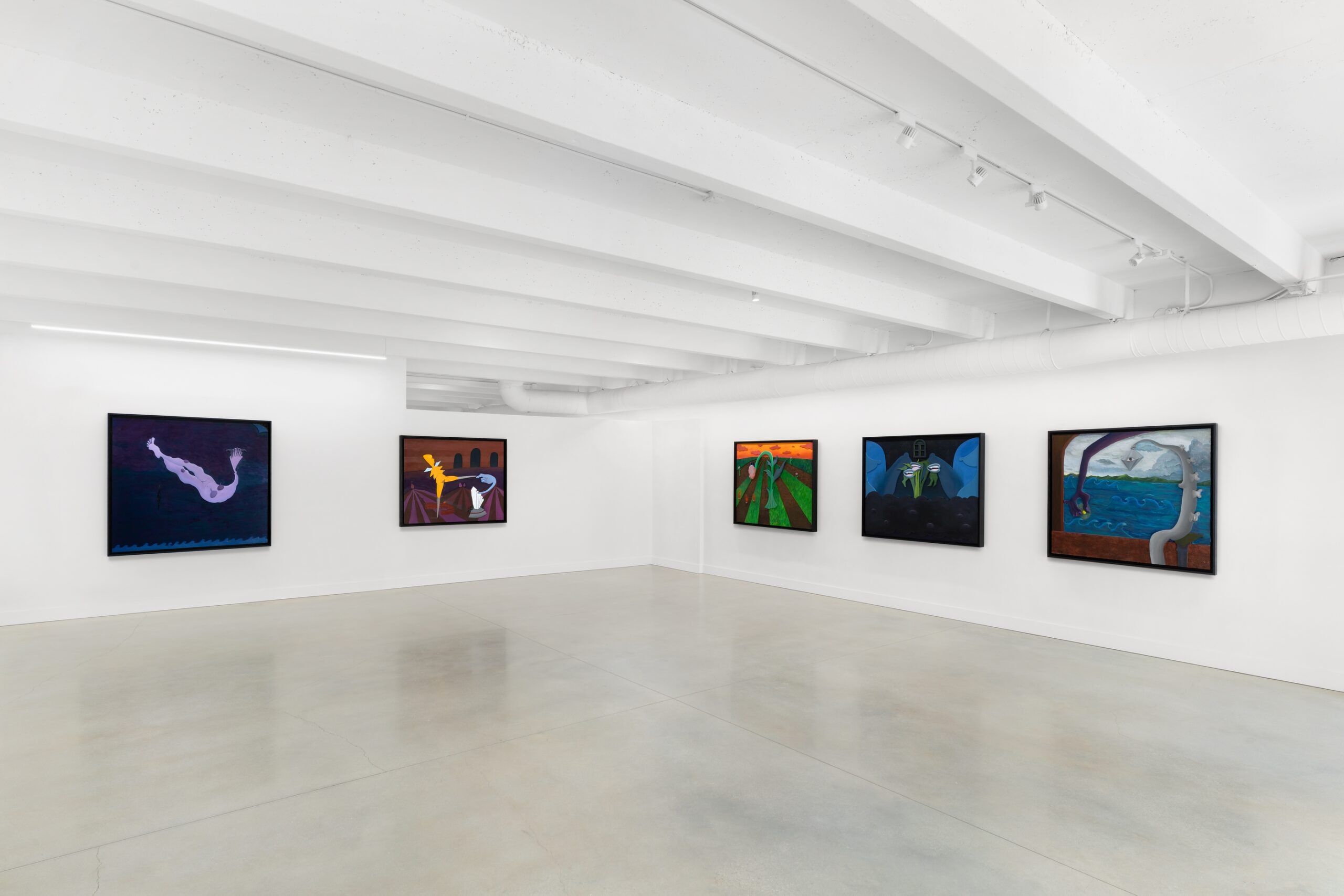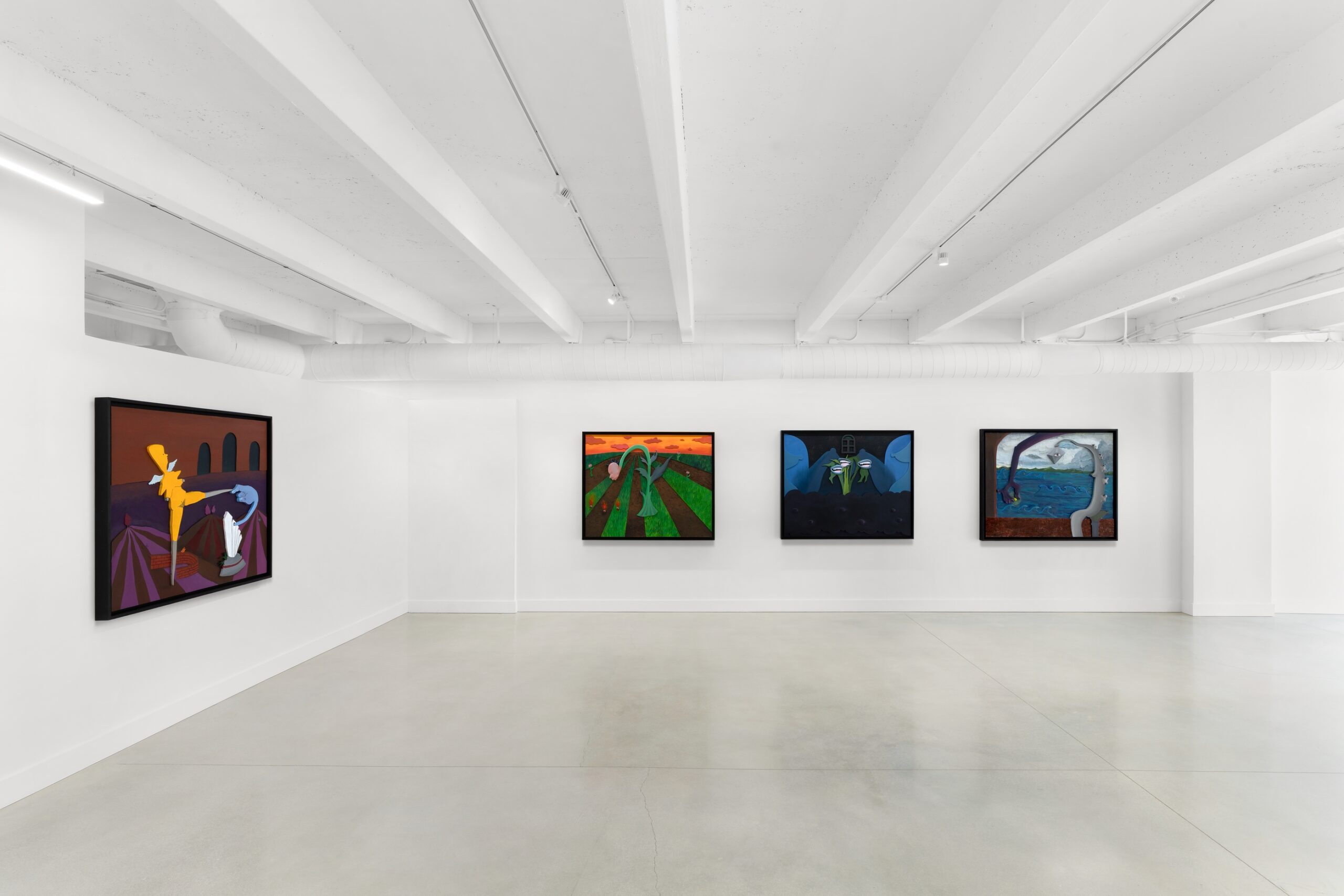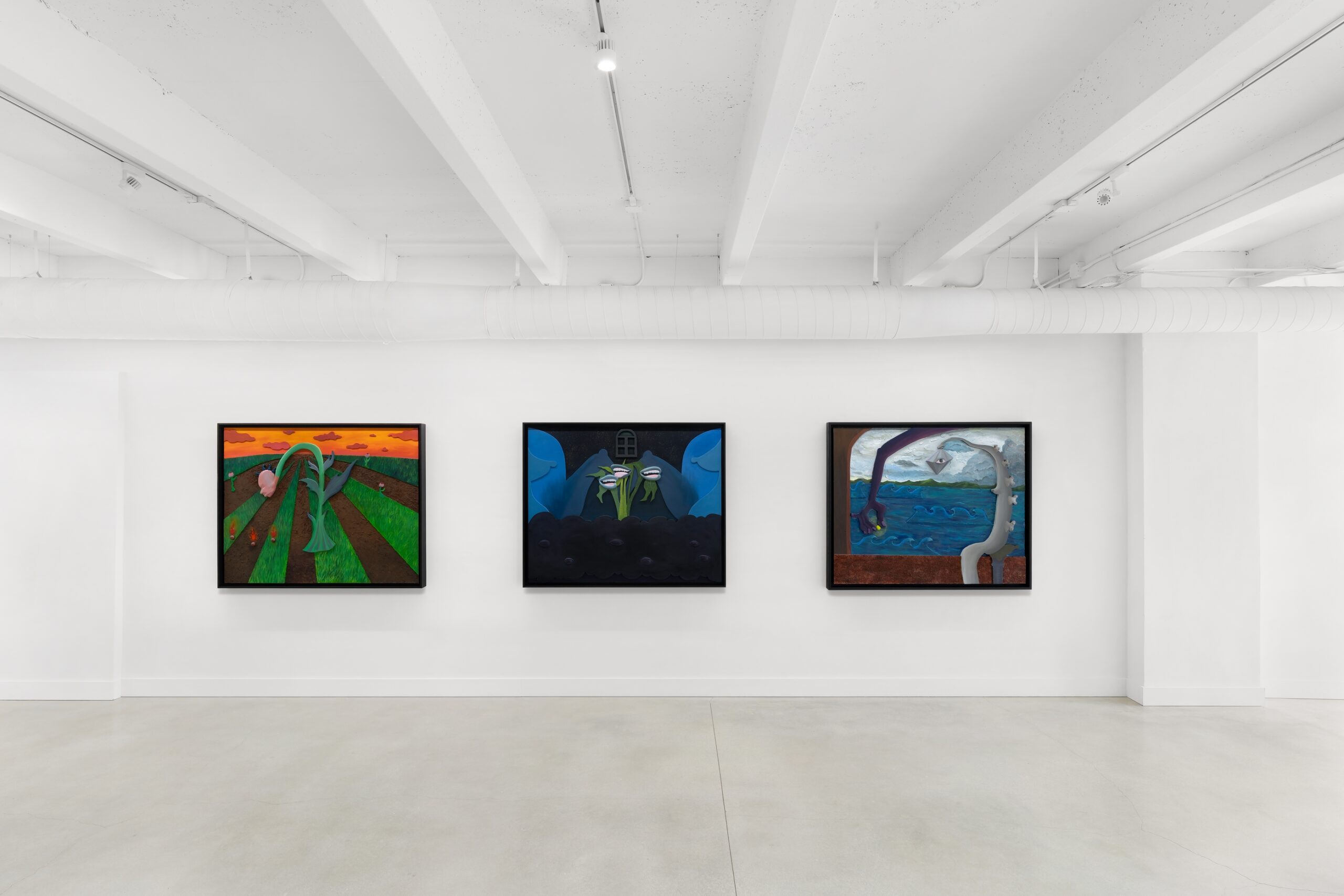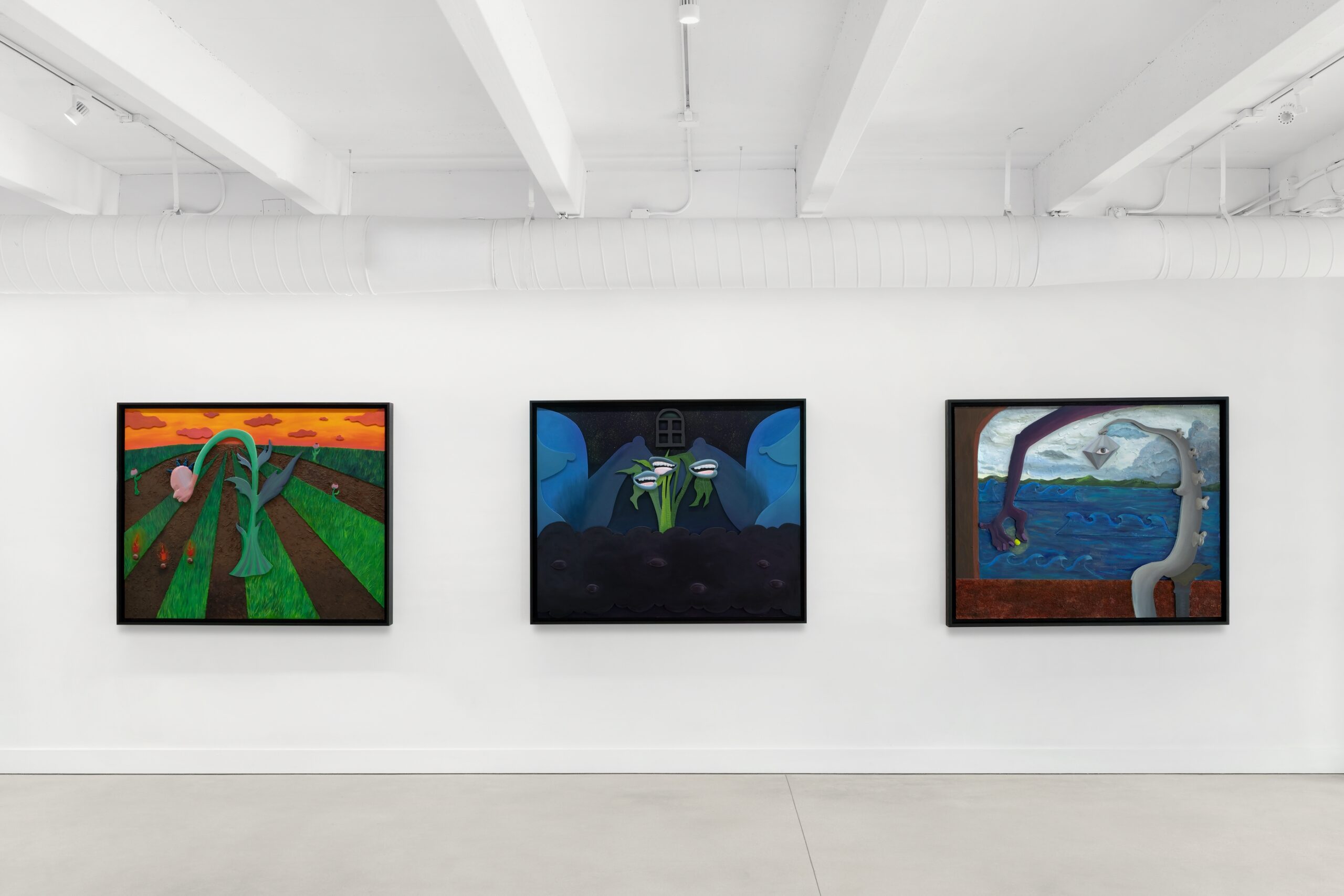in this here place, we flesh
Alexandria Smith
The centennial of Surrealism underscores its lasting influence on contemporary art. André Breton’s Surrealist Manifesto (1924) championed dreams over reason and the subconscious over realism as a path to freedom. Curated by Erin Dziedzic, this exhibition marks the debut of new work at David Castillo by New York–based artist Alexandria Smith, who carries this legacy forward, blending dream logic with symbolism, metaphor, and entwined forms of body and landscape. She remixes inherited iconography and collages elements intuitively, highlighting hybridity and duality. Through myth, biography, collective memory, and history, Smith challenges binaries and reveals the layered complexities of human experience.
Smith often engages literary references in which the body, the land, and notions of freedom are mythologized as survival and critique. The exhibition’s title, drawn from Toni Morrison’s Beloved—“in this here place, we flesh”—comes from Sethe’s recollection of Baby Suggs’s sermon in a wooded clearing. Surrounded by nature and community, Baby Suggs affirmed the radical act of self-love. In Morrison’s passage, the fusion of house, landscape, and people generates a surreal atmosphere—one that resonates in Smith’s own intertwining of bodies and landscapes, where memory becomes both image and sensation.
Drawing is central to Smith’s practice. Her paintings begin with ink drawings in which line and idea emerge with immediacy. While dimensional surfaces, cuts, and textures develop later in the paintings, the drawings reveal the clarity of her compositions—figures formed from earth, fire, water, flowers, and clouds. These hybrid entities, at once recognizable and otherworldly, recall the transformative interplay of human, animal, and elemental forms in the work of early Surrealist Leonora Carrington.
As drawings transition into panel paintings, Smith builds out select portions with textural surfaces, and dimensional mark-making that emphasize figures, body parts, and layers of landscape. In a curious intervention (2025), a raised tentacle—also resembling a seated, figure-like form with a breast and dangling diamond—features a single eye that gazes intently back at the viewer. The paintings become sculptural: breasts recur in varied forms, acknowledging the breaths of female identity, while the raised eye persists as a motif—an echo of Surrealist iconography akin to Louise Bourgeois’s marble eyes, both symbols of perception and allusions to female sexual anatomy. A bent, disembodied purple arm reaches downward opposite the tentacle, framing water, mountains, and sky as it holds a tiny glowing orb. These three-dimensional components lend the works a theatrical quality reminiscent of scenic design. Arched elements recall Renaissance niches, while horizon lines nod to early American landscape painting. Within this staged modernist display, Smith reimagines gender, identity, and iconography as organic, corporeal tableaux.
Her sculptural relief paintings further question the notion of “absolute beauty” advanced by Western philosophy, art, and architecture—from Freud to Le Corbusier—as a formula of “cleanliness”. Smith’s method of raised collage was inspired by a 2021 visit to the Peggy Guggenheim Collection in Venice, where she encountered tactile reproductions designed for blind visitors. This translation of the unseen into form informs her surfaces. In works such as a velocity of being (2025)—a floating purple figure whose head blossoms into a silhouette of cornrows—Smith invokes representations of Josephine Baker. Baker’s exaggerated, sculptural poses “and all that she stands for—objectification and desire— complicate a larger and more fraught transnational history in the making of material value based on human bodies.”1 In the painting’s gestural outline, the suggestion of Baker appears in the curved figure and in the evocation of Black female identity. The hint of a triangle in the upper right corner, alluding to turning the page, signals Smith’s turn toward a new chapter in the idealization of Black female agency—materialized through the surreal, modernist, and colonialist histories from which it has evolved.
Much of what brings Surrealist dialogue into Smith’s practice foregrounds states of in betweenness. Her gestures, forms, and spaces draw from imagery and knowledge of the past, while her modeling of complex contemporary surfaces shifts these gestures into modes of present and future expression—a Surrealism reimagined for our own epoch.
____________________________________________________________________________________
About the Artist
Alexandria Smith was born in the Bronx, New York and earned her BFA from Syracuse University, New York; MA in art education from New York University; and MFA from Parsons The New School for Design. Recent solo exhibitions include Gagosian, Hong Kong (2023- 2024); the Currier Museum of Art, Manchester, NH (2023); and Gagosian, New York (2022), among many others. Her work has been in numerous group exhibitions including Gagosian, London; Lisson, London; MASS MoCA; Harvard University; and New Museum, New York, and is in public collections such as The Studio Museum in Harlem, Mt. Holyoke College Art Museum, Longlati Foundation, and the K Museum of Contemporary Art. Smith is the recipient of many awards, fellowships and residencies such as Skowhegan, MacDowell, Yaddo and LMCC residencies.
Smith lives and works in New York. She was previously Head of Painting at the Royal College of Art, London and is currently Director of Undergraduate Studies in Studio Art and Assistant Professor in Painting and Printmaking at Yale University. in this here place, we flesh is Smith’s first solo exhibition with David Castillo.
About the Curator
Erin Dziedzic is a New York–based curator and writer whose work focuses on exhibitions, commissions, archiving, legacy planning, and scholarship with contemporary artists. Dedicated to amplifying historically excluded voices, her practice emphasizes advancing the visibility of women artists globally. She served for more than a decade as Director of Curatorial Affairs at the Kemper Museum of Contemporary Art, Kansas City, where she organized major exhibitions, commissions, and public programs. Dziedzic has collaborated with artists including Polly Apfelbaum, Firelei Báez, Virginia Jaramillo, Rashid Johnson, Aliza Nisenbaum, and Rafael Lozano-Hemmer. Her publications include Virginia Jaramillo: Principle of Equivalence (2023), a monograph on Denzil Forrester (2024), and the catalogue Magnetic Fields (2017). Her essays have appeared in catalogues and journals published by Duke University Press, Kemper Museum of Contemporary Art, as well as in ART PAPERS, The Brooklyn Rail, and many others. She frequently lectures nationally and serves on several arts boards
Alexandria Smith
